Paint. Heal. Grow.
Read our feedback
August 2018
Summary
We’ve collected information from a variety of sources, and the results are overwhelming: art helps troubled youth, engendering less stress, healthier emotions, and stronger academic performance. This special report provides strong evidence through studies and youth testimonials.
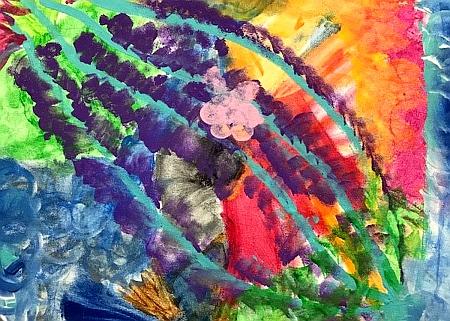
Troubled Youth and Expressive Painting
Studies and testimonials prove that exposure to art helps youth.
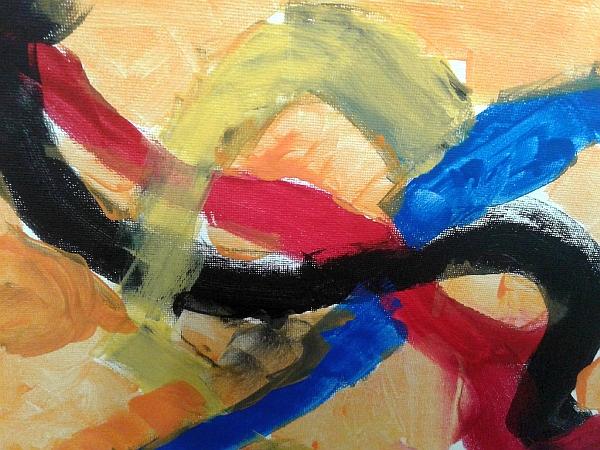
Our Youth are Stressed
According to the American Psychological Association (2014), teens report higher stress levels than adults which impacts their overall quality of life (Bethune, 2014).
Some of the issues that contribute to youth stress, as described by the American Academy of Child and Adolescent Psychiatry are:
- School demands and frustrations
- Negative thoughts and feelings about themselves
- Changes in their bodies
- Problems with friends and/or peers at school
- Unsafe living environment/neighborhood
- Separation or divorce of parents
- Chronic illness or severe problems in the family
- Death of a loved one
- Moving or changing schools
- Taking on too many activities or having too high expectations
- Family financial problems
Near our studio in Orange County, California, mental health hospitalizations among children and youth have increased 44% since 2007. Among the children and youth hospitalized, the most common diagnosis was major depression – up 115% as a category (County of Orange, 2017).
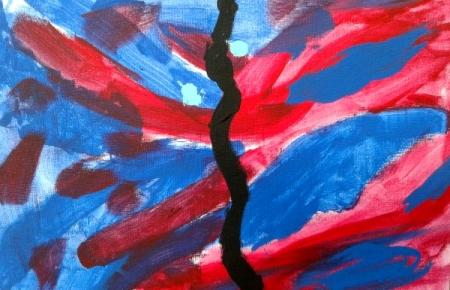
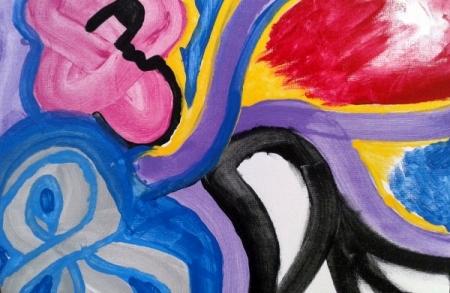
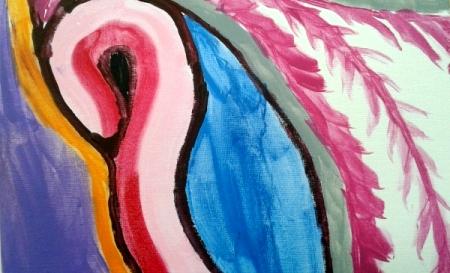
Paintings by Raging Colors Participants
Here are Some Startling Statistics:
13-20% of the youth under age 18 in the U.S. live with a mental health condition in any given year (Centers for Disease Control, 2013).
52,500 youth, ages 13-18, in Orange County alone live with a mental health condition (National Institute of Mental Health & Department of Finance).
Apart from hospitalization, how do youth cope with mental health issues? A study in Baltimore collected data on 14 and 15-year-olds to gain insight on teen stress (Center for Adolescent Health, 2006).
Here’s how the youth said they cope with stress:
For boys:
- 25% avoided or refused to deal with their stress
- 23% sought ways to distract themselves
- 17% sought support
- 35% actively tried to reduce their stress.
On the other hand, for girls:
- 19% avoided or refused to deal with their stress
- 14 % sought ways to distract themselves
- 22% sought support
- 45% actively tried to remove or reduce their stress
Several researchers have proven these are unhealthy and ineffective coping methods, which can lead to long-term issues and a deterioration in quality of life.
Art as a Powerful Tool for Coping
Our observations suggest that youth often adopt ineffective ways to cope with their stress and anxiety. At Art and Creativity for Healing, we believe art can be a healthy, powerful tool to cope with emotions.
Through this Special Report, we will exhibit how art can help young adults manage their stress, learn healthier emotions, and improve academic performance.
We experience these transformative changes in over 4000 Art for Healing workshop participants per year. Several studies support our observations, as discussed below:
1) Art Can Reduce Stress
At Art & Creativity for Healing, we have observed expressive painting provides a significant reduction in stress as reported by our participants.
A study conducted in 2016 supports our observations. The study was conducted with 39 participants aged 12 to 59. Participants’ cortisol levels were measured before and after participating in visual art making for 45 minutes. Studies often use cortisol levels from an oral swab to indicate the amount of physical stress a person is under (Kaimal, Ray, & Muniz, 2016).
What did the study find?
For 75% of participants, cortisol levels were lower after art making, meaning they were physically less stressed (Kaimal, Ray, & Muniz, 2016).
Study participants, in written responses, found the art “helped in learning about new aspects of self, freeing from constraints, an evolving process of initial struggle to later resolution, and about flow/losing themselves in the work (Kaimal, Ray, & Muniz, 2016).”
Interestingly, there was no noticeable difference in stress reduction based on age, art making time of day, prior art experience, or choice of art medium. In other words, any art making seems to reduce stress (Kaimal, Ray, & Muniz, 2016).
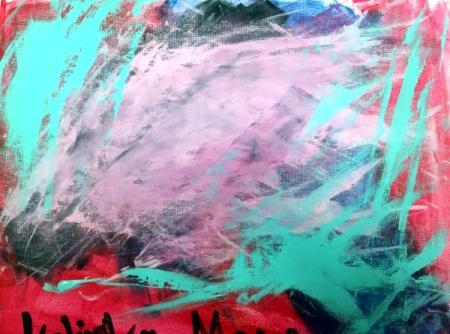
- “Art4Healing has helped me express my bottled-up feelings and instead of using my fists to express myself, I can now use paint.”
Our Non-Profit Partners have also noticed similar effects. Here is one OCDE Access Program teacher’s story:
“Art4Healing has been a wonderful gift to our students who have been going through much turmoil in their lives: divorce of their parents, incarcerated parents, personal trouble with the law, and pregnancy and teen parenting are just a few of the issues they face. Many of these problems are out of their immediate control leaving them with feelings of anger, sadness, and hopelessness. The ‘Raging Colors-Expressive Art for Teens’ program has been a tremendous tool for our students to express their feelings in a safe environment.
One of our students, Franky, recently moved to California from Mexico to live with his uncle. He was very frustrated living in a new home, missing his parents, and not having the specific words to express his feelings. Franky has excelled in the Art4Healing workshops.
As a teacher for deeply troubled students, it is a joy to be able to provide a program like ‘Raging Colors: Expressive Art for Teens’ to give them a safe place to express and be in touch with their feelings and have an avenue to release the pain. The students feel ‘heard’ in the class.”
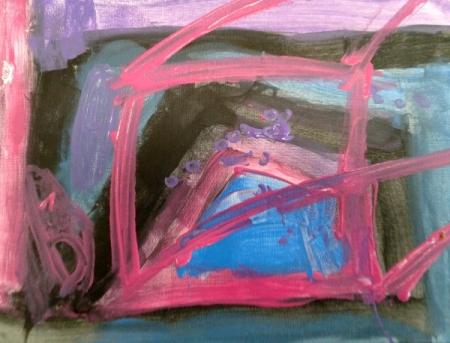
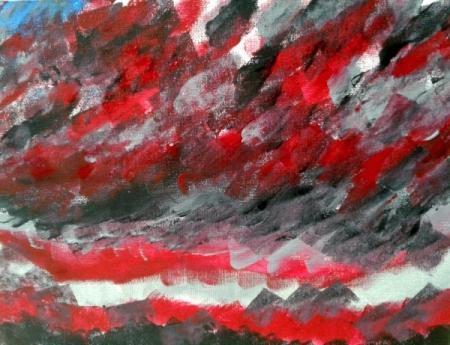
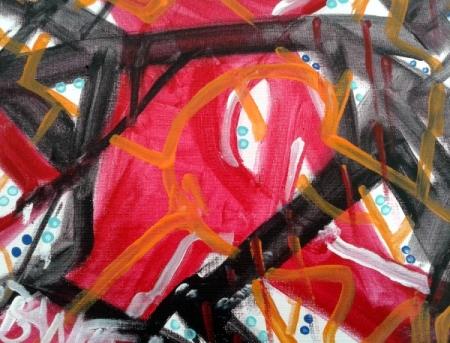
Paintings by Raging Colors Participants
2) Art Can Promote Healthier Emotions
In addition to reducing stress, art can also empower youth to manage unhealthy emotions, build resiliency and reinforce self-esteem.
This has been succinctly proven by a study conducted in 2014 by Alavinezhada, Mousavia et.al. They examined children between the ages of 7-11 that underwent mental health treatment for “intensive aggressive behavior”. These children displayed decreased levels of anger and higher levels of self-esteem after undergoing art therapy sessions (Alavinezhada, Mousavia, & Sohrabib, 2014).
The participants were divided into experimental and control groups. In the experimental group, children attended a minimum of seven, 2-hour art therapy intervention sessions. Before and after the art making sessions, the children were tested on their anger level and level of self-esteem.
Anger was measured using the Children’s Inventory of Anger, which measures beliefs associated with anger in four categories: Frustration, Physical Aggression, Peer Relationships, and Authority Relations.
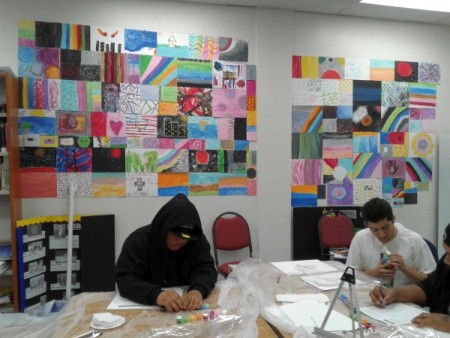
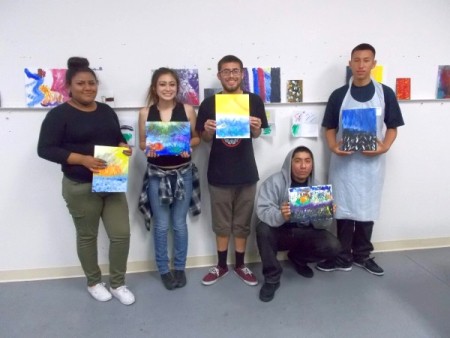
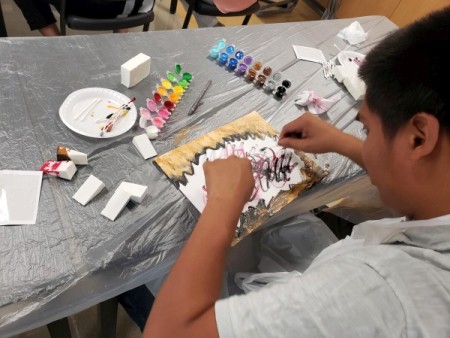
For self-esteem, the study used the Coppersmith Self-Esteem Inventory, which measures 50 self-esteem items and eight items that constitute lying, which is a measure of defensiveness. Self-esteem was broken into four categories: General self-esteem, Social self–esteem, Family self-esteem and Educational self-esteem.
The results of the test scores clearly demonstrated that art making reduces anger and increases self-esteem.
The experimental group scored 16% less anger than before their activity (vs. 5% for a control group). Of the four categories mentioned, frustration saw the biggest reduction at 23.5%.
Self-esteem scores increased 33% on average in the experimental group (vs. 2% in the control group). Art making seems to help most with social self-esteem. Children saw an 80% increase on average.
In our understanding, social self-esteem seems to be more important than ever, with increasing influence on young adults by way of social media, social pressure, and bullying.
Per the study, the results “may be explained in terms of the nonverbal expression that could be possible by art therapy in a safe way. Art therapy has substantial credentials as an effective way of working with children (and adults) who are often (for complex reasons, including fear, shame and lack of adequate language) unable to verbalize their experience (Liebmann, 2008).”
The above study and many more validate our observations on the effectiveness of art in the regulation of aggressive behavior and learning self-regulating behaviors.
These powerful testimonials from our youth participants support our thoughts:
Raging Colors Participant
My painting is hard for me. It reminds me how really messed up my life is, I’m trying to change it.
Raging Colors Participant
I painted how I’m struggling. The orange in the background is how I bullied someone, and I hurt him, and he almost died. The big X’s are how I ended up in juvie and what I did really messed up my whole life. I see how I’m trying to make up for all I lost and the bad choices, but the x’s are swirling and I’m having a hard time.
Raging Colors Participant
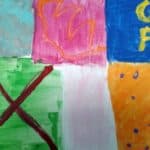
I was bullied a lot because I was poor. That’s why I put the big red X.
Raging Colors Participant
I put the black hole inside and sometimes I fill it with drugs. A better way I know would be to go out in nature, but I don’t do it.
Raging Colors Participant
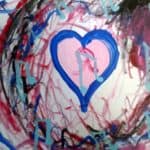
The hole in my heart is my mom because she’s not there for me. I’m homeless. I put the music notes because it’s a positive way to help me when I’m sad.
Raging Colors Participant
I painted how awful it was for me, how I was bullied so much I almost committed suicide. I see my pain in the painting, but I also see I’ve come a long way.
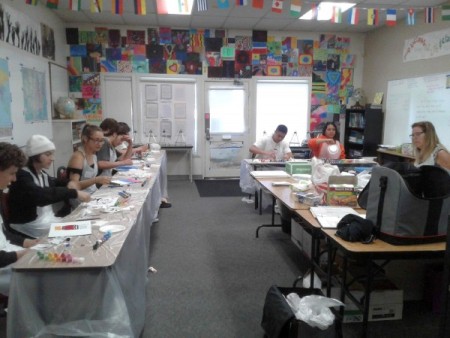
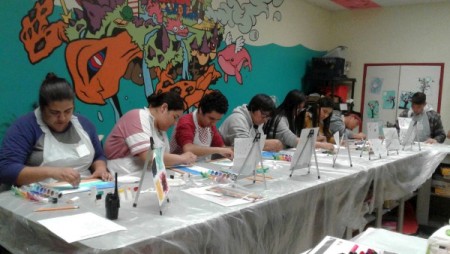
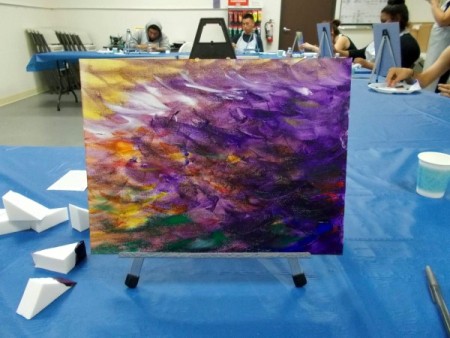
3) Art Can Strengthen Academic Performance
Finally, can art help youth perform better in school? The National Endowment for the Arts says “yes” resoundingly.
The organization published a compendium of findings from four different studies on “The Arts and Achievement of At-Risk Youth”. The report looks at the “academic and civic behavior outcomes of teenagers and young adults who have engaged deeply with the arts in or out of school (Dumais & Catterall, 2012).”
The following 7 key findings confirmed that exposure to art improves academic performance:
- Art helps with science and writing. Among underprivileged students, eighth graders who had high levels of arts engagement from kindergarten onward scored higher in science and writing, versus students who had lower levels of arts engagement over the same period.
- Art helps with math. Students who had arts-rich experiences in high school had slightly higher math grades and were more likely to complete a calculus course.
- Art improves grades. Overall student grades improved for those who had arts-rich experiences, regardless of socioeconomic status.
- Art prevents drop-outs. High school students who earned few or no arts credits were five times more likely not to have graduated than students who earned many arts credits.
- Art promotes college consideration. Both 8th-grade and high school students who had high levels of arts engagement were more likely to aspire to college than were students with less arts engagement.
- Art helps with college entrance. Arts-engaged high school students enrolled in competitive colleges, and in four-year colleges in general, at higher rates than did low arts-engaged students, regardless of socioeconomic status.
- Art helps with a bachelor’s degree. Students who had intensive arts experiences in high school were three times more likely than students who lacked those experiences to earn a bachelor’s degree. They also were more likely to earn “mostly A’s” in college.
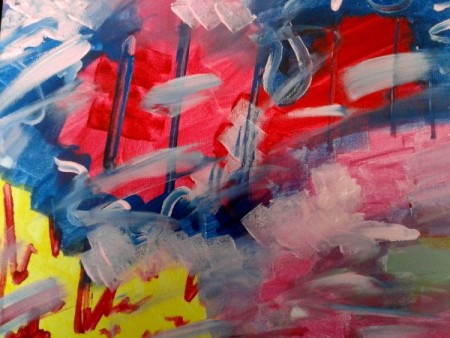
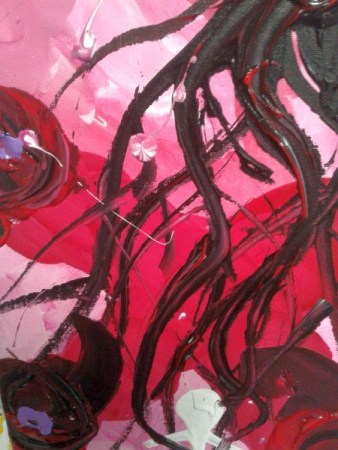
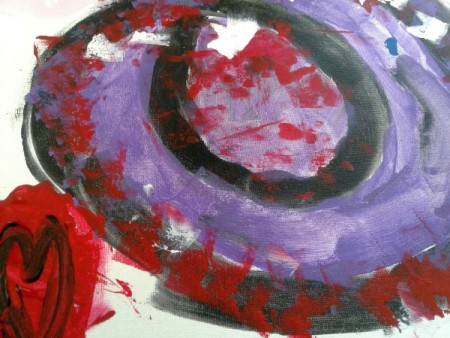
Paintings by Raging Colors Participants
These are compelling reasons to consider exposure to art is an important component of academic life. Unfortunately, many public schools are reducing or eliminating the arts from their curriculum.
Art & Creativity for Healing helps fill this gap, providing art workshops to children and young adults in Southern California. Many of these youth would have no other art exposure.
A teacher from the San Juan Education Center ACCESS school, one of our Non-Profit Partners, said:
“The Art4Healing program has assisted in our students becoming more expressive and confident in sharing their opinions on a variety of subjects such as our science phenomena discussions, and our current English Language arts projects Romeo and Juliet.
We have been able to have more heartfelt discussions about improving our social emotional capabilities as young people, moving forward with developing circles that deal with real issues that our young people need to work through.
The students really enjoy the time working with other adults who are assisting in shaping their abilities to cope with daily stressors. Can’t recommend it enough.”
How Can Art4Healing Help Teens in Crisis?
Since 2000, Art & Creativity for Healing, Inc. has helped people express their feelings in colors, when words fail. Youth and teenagers often face extraordinary difficulty expressing their feelings. The need to be understood and the potential to bottle up feelings can be overwhelming and can negatively affect their behaviors by derailing their emotional growth. Art4Healing has developed several Programs and Partnerships to help us support our Mission.
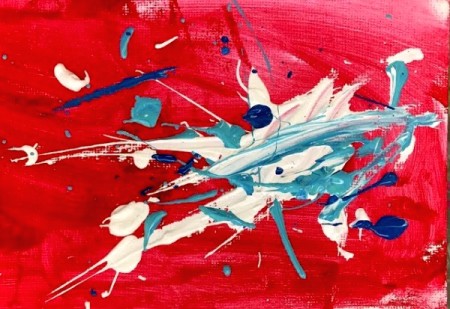
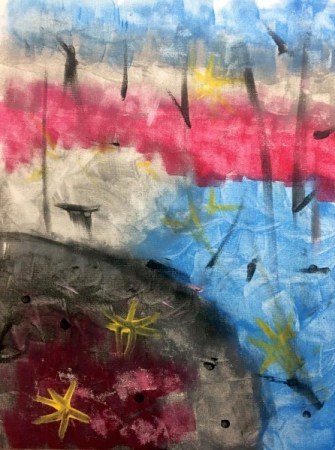
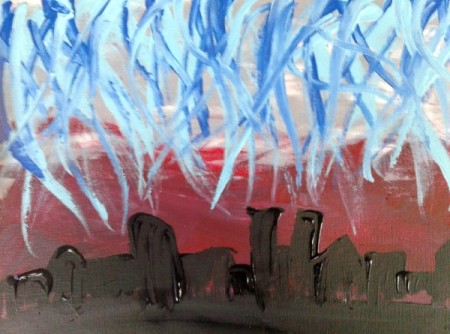
Paintings by Raging Colors Participants
Our Program - Raging Colors: Expressive Painting for Teens
Our “Raging Colors: Expressive Painting for Teens” program allows youth in crisis to use expressive art and create a series of abstract works of art. The program gives teens a safe, creative place to reflect and share their experiences, frustrations, and challenges, including exposure to drugs and alcohol, peer pressure, teen pregnancy, bullying, depression, and low self-esteem.
Through artistic expression, teens are given the opportunity to give pain a voice and express their emotions in a safe place among their peers, which helps them build self-confidence and a greater sense of self-awareness.
Our Partnerships
Western Youth Services
We partner with several of our Non-Profit Agencies to deliver these courses to at-risk youth throughout southern California. One of these Agencies is Western Youth Services, whose mission is to “advance awareness, cultivate success, and strengthen communities through integrated mental health services for children, youth, and families.”
Through Western Youth Services, we provide Art4Healing Workshops to various Family Resource Centers in Orange County:
- Family Oasis Family Resource Center
- Friendly Center Orange
- Friendly Center Placentia
- La Habra Family Resource Center
- Oak View Family Resource Center
- Stanton Family Resource Center
- Westminster Family Resource Center
We’ve centered our Partnership on helping teens in crisis with our “Raging Colors: Expressive Painting for Teens” Program. Through this partnership with Western Youth Services, we serve over 200 participants annually in over 10 site locations.
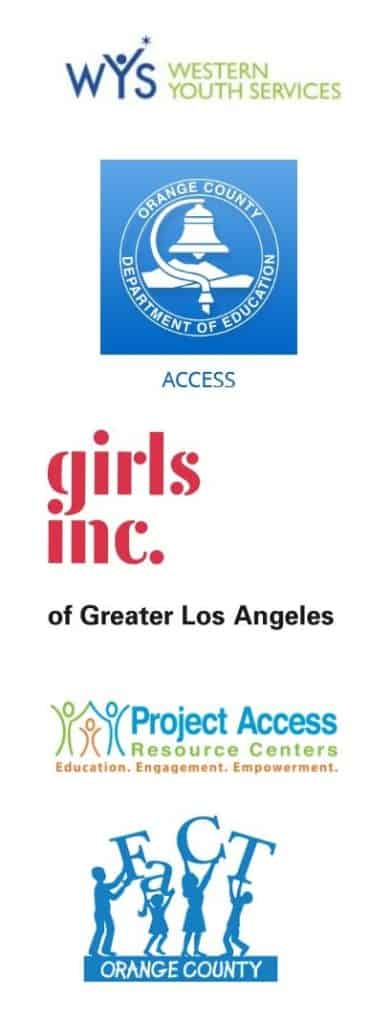
Orange County Department of Education Alternative, Community, and Correctional Education Schools and Services (OCDE ACCESS)
The Orange County Department of Education ACCESS (Alternative, Community, and Correctional Education Schools and Services) Schools are set in community-based, alternative venues to nearly 17,000 students annually.
The ACCESS student population is unique in that it encompasses a wide range of youth, including:
- students in group homes or incarcerated in institutions
- students on probation or homeless
- students who are parents or working full-time
- students participating in a home-schooling program
- students who are referred by local school districts
We have facilitated weekly workshops since 2016 at various OCDE ACCESS schools:
- Mission Viejo ACCESS
- Fountain Valley Education Center
- Harbor Learning Center
- 17th & Ross School
- Santiago Creek Community School
- San Juan Education Center
- Skyview Elementary School (serving homeless students)
A few reactions from OCDE ACCESS students after experiencing “Raging Colors: Expressive Painting for Teens” are in the sidebar.
These testimonials are a powerful reminder of the healing effects of art on youth!
OCDE Access Participant
I have a hard time seeing my positive traits and sometimes I don’t want to be generous, kind or caring to others because I have been hurt in the past.
OCDE Access Participant
I just got out of jail and this workshop helped me realize that I want to make my life right again, have a better relationship with my mother, and be free from my drug use and problems.
OCDE Access Participant
I want to keep the little painting to remind me of my future. There is hope.
OCDE Access Participant
This painting made me realize I need to fix my life.
OCDE Access Participant
My painting showed me that I have made poor decisions in my life, but now I have the desire to share my feelings more openly so that they don’t stay bottled up inside.
Girls, Inc. Los Angeles and Project Access
We serve several other partner agencies with our “Raging Colors: Expressive Painting for Teens” program.
Girls Inc. Los Angeles and Project Access are two of them. Since 2017, we have worked with Girls, Inc. Los Angeles to provide Art4Healing Workshops to at-risk and under-represented girls in the Greater Los Angeles area. Girls, Inc. LA “inspires all girls to be strong, smart, and bold, through direct service and advocacy.”
Through our partnership with Project Access (a non-profit agency who strives “to be the leading provider of vital on-site health, education and employment services to low-income families, children, and seniors”), we facilitate workshops to children in Project Access Resource Centers in Orange County.
Girls, Inc. LA Participant
I liked Art4Healing because it has helped me share my feelings. I want to have more classes because it’s fun learning how to communicate with others.
Girls, Inc. LA Participant
I love this program and would love it if it still ran with my school for the rest of the year. This program helped me vent and I enjoyed it.
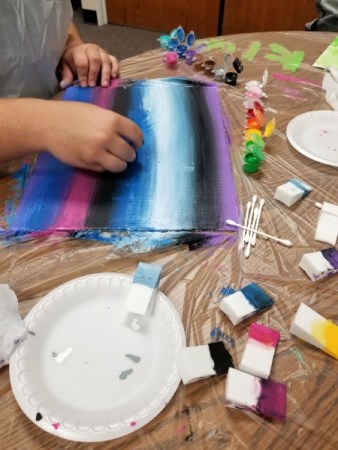
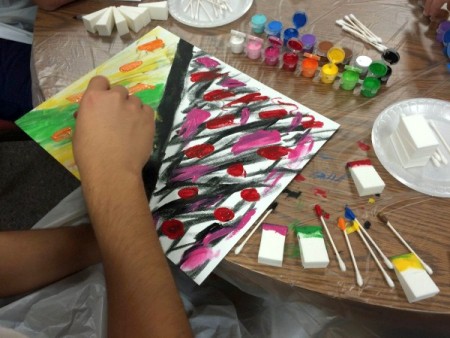
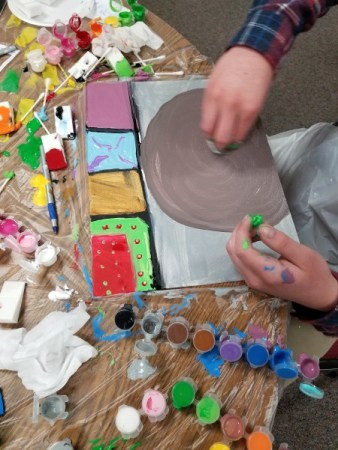
Outcomes Report
“Raging Colors: Expressive Painting for Teens” Program
At the end of each workshop, participants complete written surveys regarding the extent to which Art4Healing helped them identify, process, and express their feelings in a constructive way.
From 2016-2018, a third-party research firm completed an evaluation of the “Raging Colors: Expressive Painting for Teens” program. Key findings include:
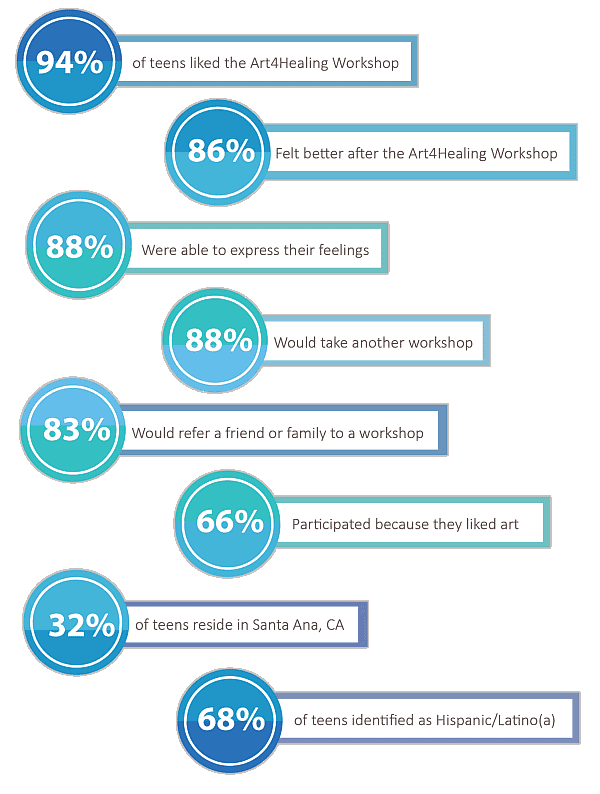
To review the full Outcomes Report, please visit Program Results page.
Want More Information?
We’d love to hear from you today. We’re standing by to speak with you one-on-one about the power of healing art!
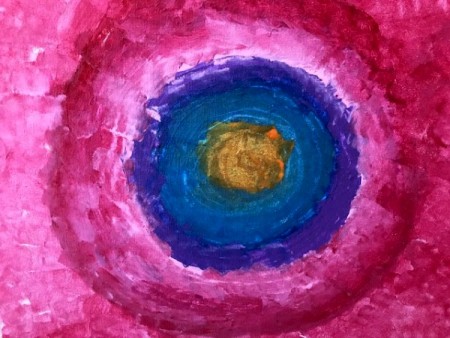
Works Cited
- Alavinezhada, R., Mousavia, M., & Sohrabib, N. (2014). Effects of art therapy on Anger and self-esteem in agressive children. Procedia – Social and Behavioral Sciences, 113, 111-117. Retrieved from www.sciencedirect.com
- American Academy of Child and Adolescent Psychiatry. (2013, 02). Stress Management and Teens. Retrieved from American Academy of Child & Adolescent Psychology: https://www.aacap.org/AACAP/Families_and_Youth/Facts_for_Families/FFF-Guide/Helping-Teenagers-With-Stress-066.aspx
- Bethune, S. (2014, February). American Psychological Association Survey Shows Teen Stress Rivals That of Adults. Retrieved August 2018, from www.apa.org: http://www.apa.org/news/press/releases/2014/02/teen-stress.aspx
- Center for Adolescent Health. (2006, 01). Confronting Teen Stress: Meeting the Challenge in Baltimore City. Retrieved from Johns Hopkins Bloomberg School of Public Health: https://www.jhsph.edu/research/centers-and-institutes/center-for-adolescent-health/_includes/_pre-redesign/Teen_Stress_Guide.pdf
- Centers for Disease Control. (2013, 05 17). Mental Health Surveillance Among Children — United States, 2005–2011. Retrieved from CDC: https://www.cdc.gov/mmwr/preview/mmwrhtml/su6202a1.htm
- County of Orange. (2017). Orange County Indicators Report. Orange County Community Indicators Project. Santa Ana, California: County of Orange. Retrieved from www.ocgov.com/about/infooc/facts/indicators
- Dumais, S. A., & Catterall, J. S. (2012). The Arts and Achievement in At-Risk Youth. National Endownment for the Arts. Retrieved from arts.gov
- Kaimal, G., Ray, K., & Muniz, J. (2016). Reduction of Cortisol Levels and Participants’ Respnoses Following Art Making, Art Therapy. Journal of the American Art Therapy Association, 33(2), 74-80. doi:10.1080/07421656.2016.1166832
- Liebmann, M. (2008). Art Therapy and Anger. New York: Guilford Press.
- National Institute of Mental Health & Department of Finance. (n.d.). Calculation using National Institute of Mental Health prevalence estimate of 20% and Department of Finance projections (2017 youth population).